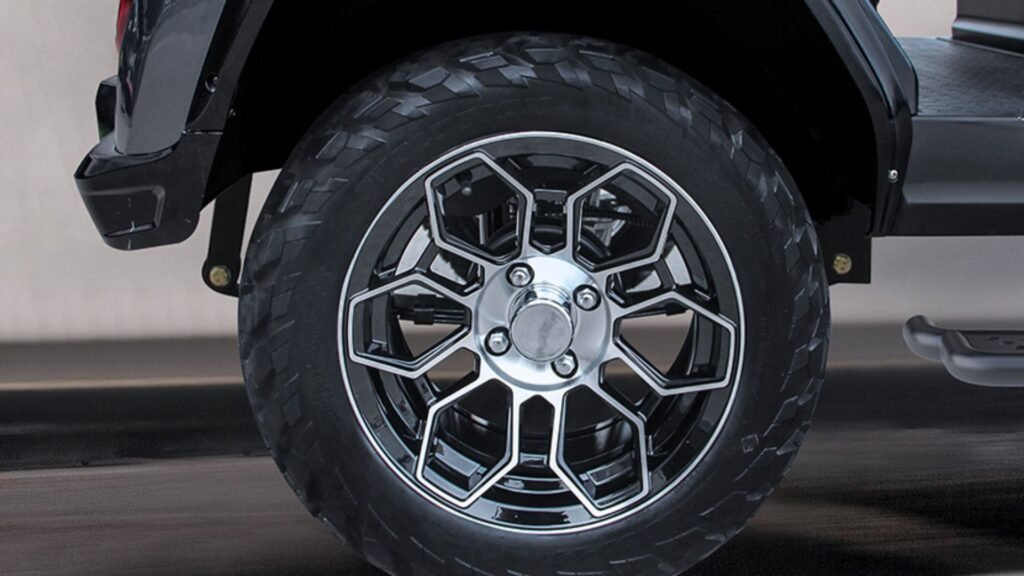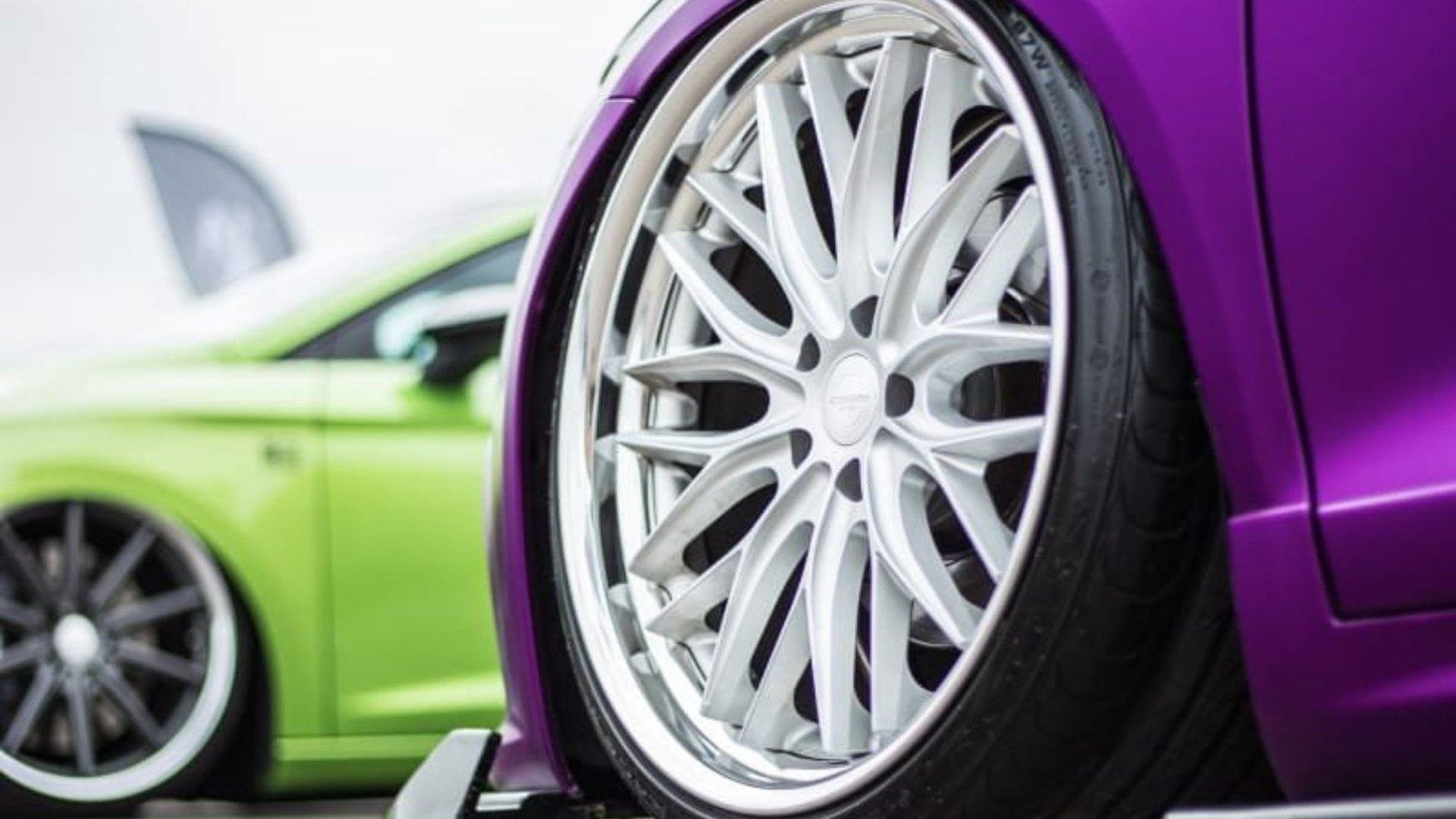Car wheels have come a long way since the early days of automobiles. From their rudimentary beginnings to the sophisticated designs we see today, wheels have evolved significantly in terms of materials, technology, and aesthetics. This journey through time showcases how advancements in car wheel design have enhanced vehicle performance, safety, and style.

1. Early Beginnings
Wooden Wheels
Overview: In the early days of automobiles, wooden wheels were the standard.
Key Features:
- Material: Made from sturdy wooden spokes and rims.
- Construction: Often reinforced with metal bands to improve durability.
Benefits:
- Accessibility: Wood was readily available and easy to work with.
- Cost-Effective: Wooden wheels were relatively inexpensive to produce.
Limitations:
- Durability: Wood could rot or warp over time, affecting performance and safety.
- Maintenance: Wooden wheels required regular maintenance to keep them in good condition.
Steel Wheels
Overview: Steel wheels began to replace wooden wheels in the early 20th century, offering greater durability and strength.
Key Features:
- Material: Made from stamped or forged steel.
- Construction: Usually featured a steel rim with spokes or a solid design.
Benefits:
- Strength: Steel wheels were much stronger and more durable than wood.
- Performance: Provided better performance and safety for early automobiles.
Limitations:
- Weight: Steel wheels were relatively heavy, which could affect vehicle handling.
2. Mid-20th Century Innovations
Alloy Wheels
Overview: The introduction of alloy wheels marked a significant innovation in wheel design.
Key Features:
- Material: Made from a mixture of metals, typically aluminum or magnesium alloys.
- Design: Offered a range of designs and finishes, including polished and painted options.
Benefits:
- Lightweight: Alloy wheels are lighter than steel wheels, improving vehicle handling and fuel efficiency.
- Aesthetics: Allowed for more stylish and customizable designs.
Limitations:
- Cost: Alloy wheels are generally more expensive than steel wheels.
- Durability: They can be more prone to damage from impacts compared to steel wheels.
Disc Brakes
Overview: The widespread adoption of disc brakes required changes in wheel design to accommodate the new braking technology.
Key Features:
- Design Changes: Wheels were redesigned to provide adequate clearance for disc brakes.
- Performance Enhancements: Improved braking performance and safety.
Benefits:
- Better Braking: Disc brakes provide more effective stopping power compared to drum brakes.
- Improved Safety: Enhanced vehicle safety and performance.
3. Late 20th Century Developments
Tubeless Tires
Overview: The introduction of tubeless tires represented another major advancement in wheel technology.
Key Features:
- Design: Tubeless tires are designed to work without an inner tube, relying on a seal between the tire and the rim.
- Material: Typically made from advanced rubber compounds and reinforced with steel belts.
Benefits:
- Reduced Risk of Blowouts: Tubeless tires are less likely to blow out compared to tubed tires.
- Improved Safety: Provides better overall vehicle safety and performance.
High-Performance Wheels
Overview: As vehicles became more performance-oriented, wheels were designed to meet the demands of high-speed driving and handling.
Key Features:
- Material Innovations: Use of lightweight materials like forged aluminum and carbon fiber.
- Design Enhancements: Aerodynamic designs and advanced cooling features.
Benefits:
- Enhanced Performance: Improved handling, acceleration, and braking.
- Increased Durability: Better able to withstand high-speed stresses and conditions.
4. 21st Century Advances
Smart Wheels
Overview: Modern wheels are incorporating smart technology for enhanced functionality and safety.
Key Features:
- Embedded Sensors: Sensors monitor tire pressure, temperature, and wear.
- Real-Time Data: Provides real-time information to drivers via onboard systems.
Benefits:
- Enhanced Safety: Real-time monitoring helps prevent issues such as under-inflation and overheating.
- Improved Maintenance: Facilitates easier maintenance and vehicle diagnostics.
Eco-Friendly Materials
Overview: The automotive industry is increasingly focusing on sustainability, leading to innovations in wheel materials.
Key Features:
- Recycled Materials: Use of recycled aluminum and other eco-friendly materials.
- Energy Efficiency: Designs aimed at reducing the environmental impact of manufacturing.
Benefits:
- Environmental Impact: Reduces the carbon footprint and supports sustainable practices.
- Cost Efficiency: Often more affordable due to the use of recycled materials.
5. Future Trends
3D-Printed Wheels
Overview: 3D printing technology is beginning to make an impact on wheel design and manufacturing.
Key Features:
- Custom Designs: Allows for the creation of custom wheel designs with intricate details.
- Material Flexibility: Can use a variety of materials, including lightweight composites.
Benefits:
- Innovative Designs: Enables more creative and functional designs that were previously impossible.
- Reduced Waste: Minimizes material waste during the manufacturing process.
Enhanced Safety Features
Overview: Future wheel designs are expected to include advanced safety features.
Key Features:
- Built-in Sensors: Further advancements in sensor technology for monitoring and safety.
- Adaptive Technologies: Wheels that can adapt to different driving conditions or adjust their performance based on real-time data.
Benefits:
- Increased Safety: Provides even greater safety and performance benefits.
- Advanced Functionality: Enhances driving experience with adaptive and responsive technologies.
Conclusion
The evolution of car wheels reflects the broader advancements in automotive technology and design. From wooden wheels to high-tech smart wheels, each stage in this evolution has brought improvements in performance, safety, and aesthetics. As technology continues to advance, we can expect even more innovations in wheel design that will enhance driving experiences and contribute to the future of automotive engineering.




